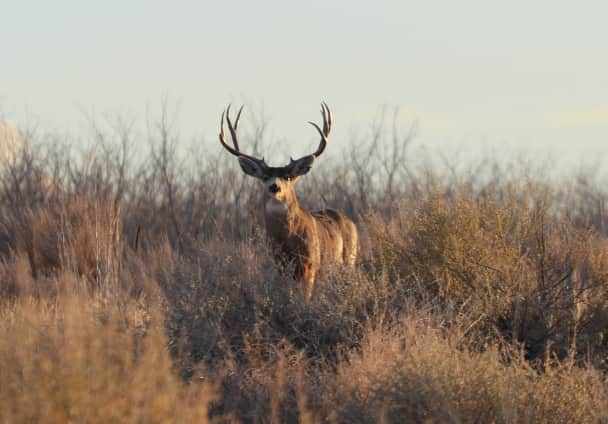Colorado Officials Scramble for Solutions to Mule Deer Decline
OutdoorHub Reporters 08.22.14

In just a span of eight years, Colorado’s mule deer population dropped from 614,100 to 390,600. From 2005 to 2013, the state’s mule deer herds dipped 36 percent and is now currently 125,000 animals short of the goal set by the state’s Parks and Wildlife (CPW). It is not unusual for deer populations to fluctuate, especially in the West, but officials say there is something worrying about the recent decline.
“Unlike previous times in history when mule deer populations have bounced back, we’re in a time right now where mule deer populations are continuing to decline,” CPW’s Jody Kennedy told Colorado Public Radio.
Earlier this month the CPW held a public strategy summit to discuss the ongoing decline of the state’s mule deer herds and to set priorities. The meeting was attended by mostly hunters, but officials say that the problem is large enough to merit the attention of the general public, not just sportsmen. According to The Denver Post, Colorado hunters see about a 45 percent success rate, harvesting about 35,000 to 40,000 animals per year. In the face of dwindling deer numbers, officials have already slashed the number of permits available and eliminated most anterless deer hunting. Yet the problem continues, and experts say that hunting is not the source of the problem.
“We’re all guilty of it. The last 10 to 20 years there has been a lot of growth in homes in the country with the new roads, driveways, dogs, horse pastures and traffic. It takes away habitat and puts stress on the animal,” said CPW biologist Brad Weinmeister.
Deer decline can be due to any number of issues, including migration barriers, disease, loss of habitat, predators, weather, and competition with other wildlife such as elk. The CPW is now working to engage the public and seek input with a list of seven strategic priorities:
- Improving habitat quality, create seperate landscapes for deer and elk to minimize competition.
- Managing predators where predation may be a problem.
- Preventing habitat loss and work with industry and private landowners to mitigate the impacts of energy development.
- Reduce the impact of highways on mule deer movement.
- Reduce the impacts of human recreation on deer (ATV riding and other outdoor activities during fawning periods, shed hunting in mid-winter).
- Manage doe harvests.
- Monitor and survey deer diseases.
The CPW is especially concerned with deer along the northwestern West Slope, where mule deer have declined by as much as two-thirds to only 32,000 animals. Conservationists in the state and region warn that the steps to a solution must be taken soon, rather than later.
“There are a lot of things we can do,” Kate Zimmerman, public lands policy director for the National Wildlife Federation, previously told the Post. “We can get better in the types of activities we allow in deer habitat—like oil and gas development. We can get better in the ways we do oil and gas development in order to reduce the impact on deer habitat.”
You can see a video of Colorado’s history with the mule deer below:

